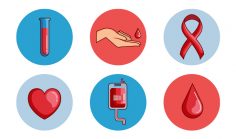Concussions and common head injuries are especially concerning as they influence one of the most vital organs of the body –the brain. This is the organ that makes us who we are. Our personality, emotions, and critical thinking are all located within the brain. As a result, injuries to the brain can be devastating for both the person who has sustained the injury, as well as for their family.
Brain injuries can be classified in two categories: traumatic brain injuries and acquired brain injuries.
- Traumatic brain injuries are an injury to the brain, which is caused by an external force after birth. Acquired brain injuries include all types of traumatic brain injuries, and also brain injuries caused after birth by stroke and loss of oxygen to the brain (hypoxic brain injury).
- Acquired brain injuries, however, do not include degenerative brain conditions like Alzheimer’s Disease or Parkinson’s Disease.
Traumatic brain injuries include:
- Concussions. Concussions, which are also known as mild traumatic brain injuries, occur with a traumatic event that alters the way your brain functions. According to the Mayo Clinic, these effects are usually temporary, but can include: headaches, problems with concentration, memory, balance, and coordination. Concussions can occur from a “blow to the head,” a fall, or when the body or head is violently shaken. Often times, a person may temporarily lose consciousness after the traumatic event. Concussions are especially common in those who participate in contact sports, like football. Although concussions do damage the brain, the vast majority of patients with concussions recover fully. Those who do not recover completely may suffer from various other complications, which include epilepsy (seizures), post-concussion syndrome (concussion symptoms that last for weeks to months), chronic headaches, and vertigo (feeling of spinning or imbalance).
- Contusions. Contusions result from direct impact on the brain, which causes a bruise or bleeding within or on the brain. Large contusions may need to be surgically removed.
- Coup-contrecoup. This type of injury occurs when there is brain damage at the site of impact as well as at the opposite side due to the brain making contact within the side of the skull secondary to momentum of the initial trauma.
- Diffuse axonal. These injuries occur with strong rotational or acceleration forces, which can occur in car accidents or in a patient with shaken baby syndrome. Diffuse axonal injury results in tears within the brain as it lags behind the quick movement of the skull. The extensive nerve tearing causes various chemicals to be released within the brain that eventually cause more damage to the brain. Diffuse axonal injury can cause temporary or permanent damage and even coma and death.
- Penetrating injury. Occurs when a bullet, knife, or other object enters the skull and injury the brain, often times forcing hair, bone, or other debris inside the skull/brain as well. Firearms are the single most common cause of death from traumatic brain injury.
Acquired brain injuries occur after, or secondary to, strokes, tumors, hypoxia (decreased levels of oxygen), anoxia (lack of oxygen), toxins, degenerative diseases, near drownings, and other conditions not necessarily caused by external forces.











